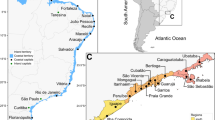Abstract
Throughout the world, the advent of mass tourism and, in particular, seaside tourism has led to significant economic and demographic growth. This growth was most often followed by urban sprawl along the coasts, resulting in dramatic changes in their landscapes. These transformations were essentially an artificialisation of the coasts and the emergence of a barrier between the littoral space and the hinterland. Tunisia, and in particular the Sahelian region, have not escaped this phenomenon, and since the emergence of this economic sector in the early years of independence, there has been a simultaneous coastal and was confined in a narrow ribbon along the beaches thus turning its back to the hinterland. Moreover, in addition to the profound transformations that this urban continuum has produced on the coastal landscapes of this region, it has had other negative repercussions. This is due to its high consumption of spaces, particularly in vulnerable sites, its disturbance in the exploitation of natural resources (water pollution, access to water, reduction of local natural biodiversity, reduction of the coastal agricultural area, reduction of the beach surface, etc.) and its socio-cultural impact through the marginalization of countryside. This impact of coastal artificialisation, notably on the environment and sustainable development is found not only in the Sahelian region of Tunisia but also in several countries of the Mediterranean basin, such as: Morocco, where tourist and resort urbanization has taken place in the form of a ribbon along the beaches and on former coastal agricultural land, and Algeria, where a diffuse urbanization generated in particular by the most widespread form of dwelling which is the form of individual dwelling, has invaded coastlines such as those of the city of Oran.
Access this chapter
Tax calculation will be finalised at checkout
Purchases are for personal use only
Similar content being viewed by others
References
Ben Attia O (2016) Interactionsbetween the evolution of Tunisian coastal agriculture and the development of urbanization and tourism. The case of peri-urban areas north-east of Sousse and southeast of Monastir. PhD thesis in Landscape, Territory and Heritage. Higher Institute of Agronomy Chott-Mariem, Sousse, Tunisia
Jedidi M (1986) Economic growth and urban space in the Tunisian Sahel since Independence. Publication of the University of Tunis. Tome I, Tunis
Sethom H, Kassab A (1981) The geographical regions of Tunisia. Publication of the University of Tunis
Houimli E (2008) The factors of resistance and fragility of coastal agriculture in the face of urbanization: the case of the region of Sousse Nord in Tunisia. PhD Thesis in Landscape Science and Architecture. Institute of Life Sciences and Industries and Environment (AgroParisTech). Directed by Donadieu, P
Lamine R (2000) Cities and townspeople of the Central Sahel. Acts Collection. The gold of time. Tunis
Toumi S (2007) Public spaces, places of cultural diversity in the territories of tourism. Comparative approach in the Sahelian territory. Master’s in Landscape, Territory and Heritage. Higher Institute of Agronomy Chott-Mariem, Sousse, Tunisia. Co-directed by Donadieu, P. et Vidal, R
Berriane M (1996). Development, urbanization of the Mediterranean coast and environment in Morocco. In: Ben Ali D, Di Giulio A, Lasram M, Lavergne M (eds) Urbanization and agriculture in the Mediterranean: conflicts and complementarities. l’Harmattan. Paris
Valette E, Chéry PP, Debolini M, Azodjilande J, François M, El Amrani M (2013) Urbanization on the outskirts of Meknes (Morocco) and become agricultural land: the example of the agrarian cooperative Naïji. Agriculture Notebook. Volume XX. N°8
Rebouha, F. (2005). Mutation of rural space near urban space: the case of the city of Oran. In international seminar cities and territories: changes and current issues. LaboratoryPUVIT. Sétif
Gangneron E, Mayol P (2019) Urban agriculture: a decisive tool for sustainable cities. CESE 15
Marcotte P, Bourdeau L, Sarrasin B (2017) Tourism and sustainable development. An exercise of adaptation, integration and reconciliation. TEOROS Tourism Res J
Author information
Authors and Affiliations
Editor information
Editors and Affiliations
Rights and permissions
Copyright information
© 2021 Springer Nature Switzerland AG
About this chapter
Cite this chapter
Ben Attia, O., Fersi, F., Rejab, H. (2021). The Environment and Sustainable Development in Front of the Artificialisation of the Coastlines: Coasts of Tunisia, Morocco and Algeria. In: Abu-hashim, M., Khebour Allouche, F., Negm, A. (eds) Agro-Environmental Sustainability in MENA Regions. Springer Water. Springer, Cham. https://doi.org/10.1007/978-3-030-78574-1_9
Download citation
DOI: https://doi.org/10.1007/978-3-030-78574-1_9
Published:
Publisher Name: Springer, Cham
Print ISBN: 978-3-030-78573-4
Online ISBN: 978-3-030-78574-1
eBook Packages: Earth and Environmental ScienceEarth and Environmental Science (R0)




